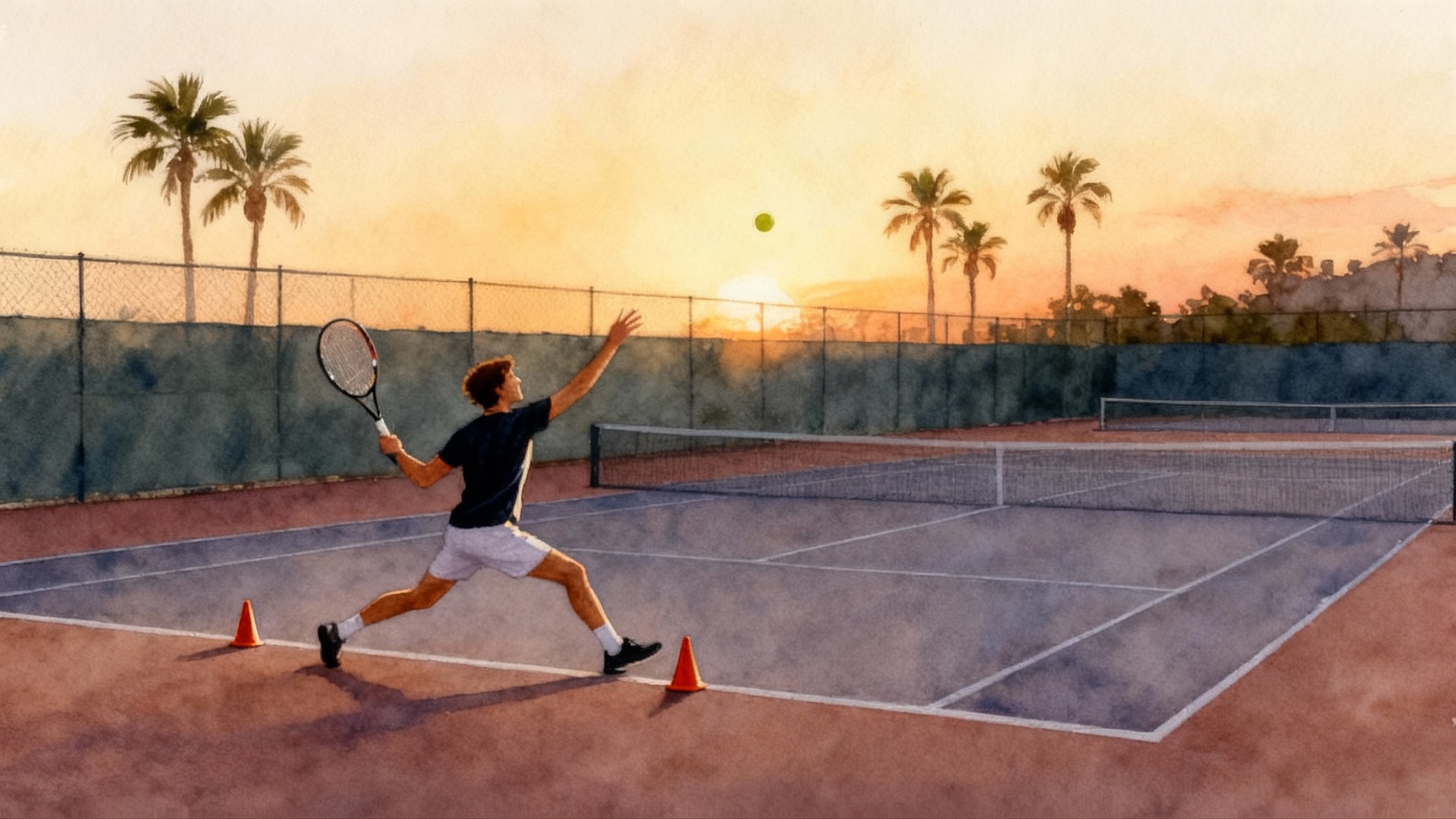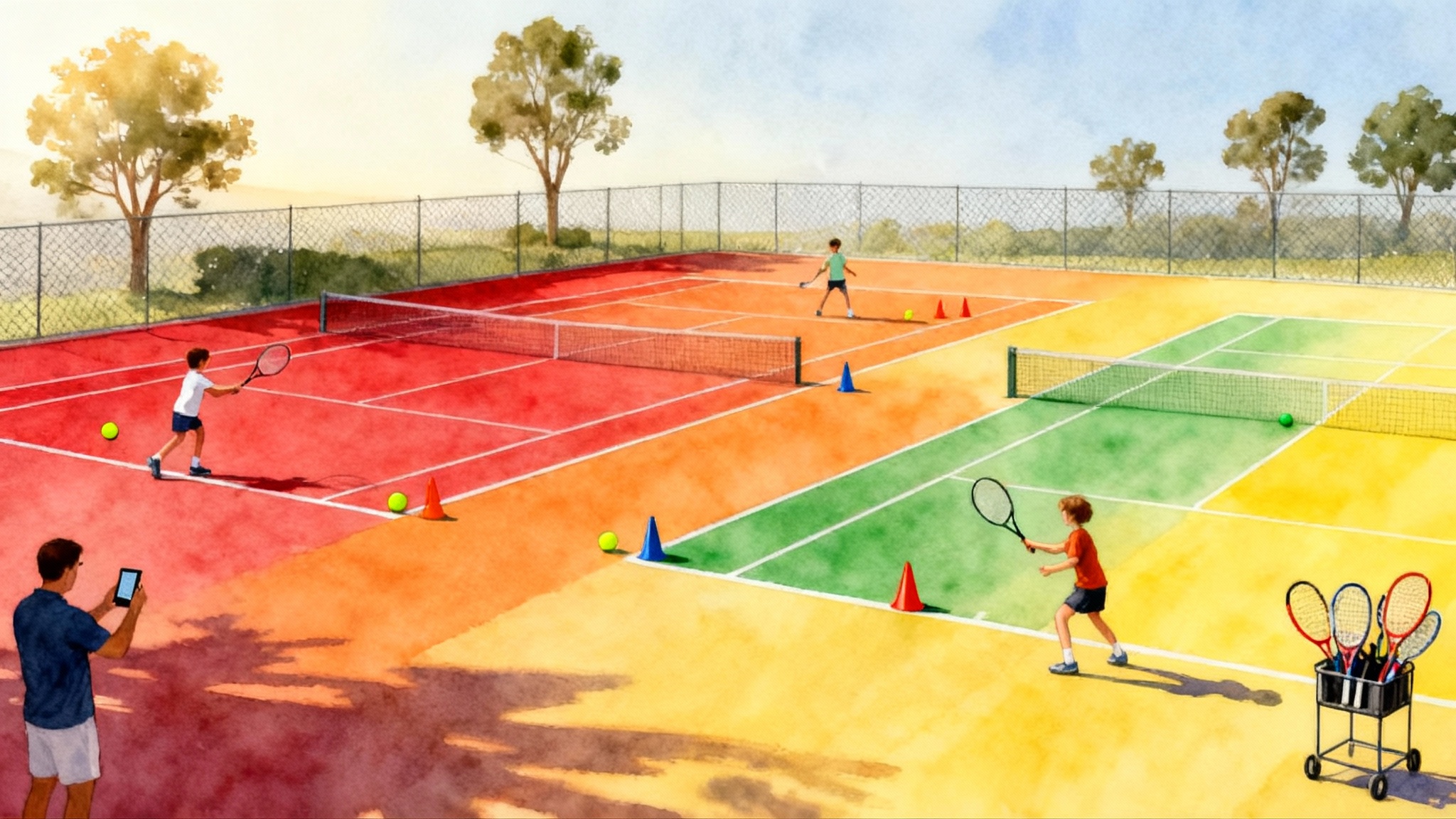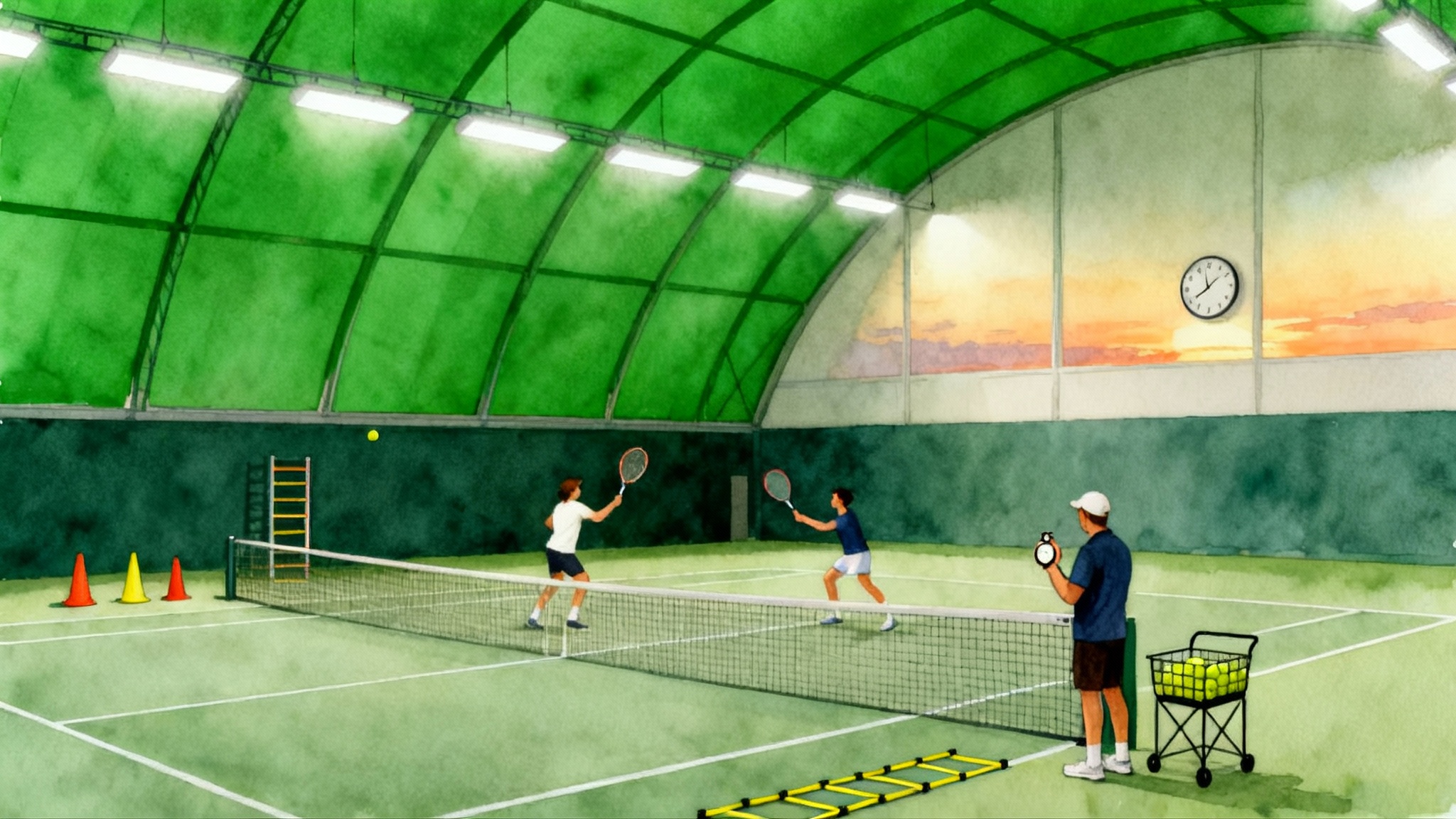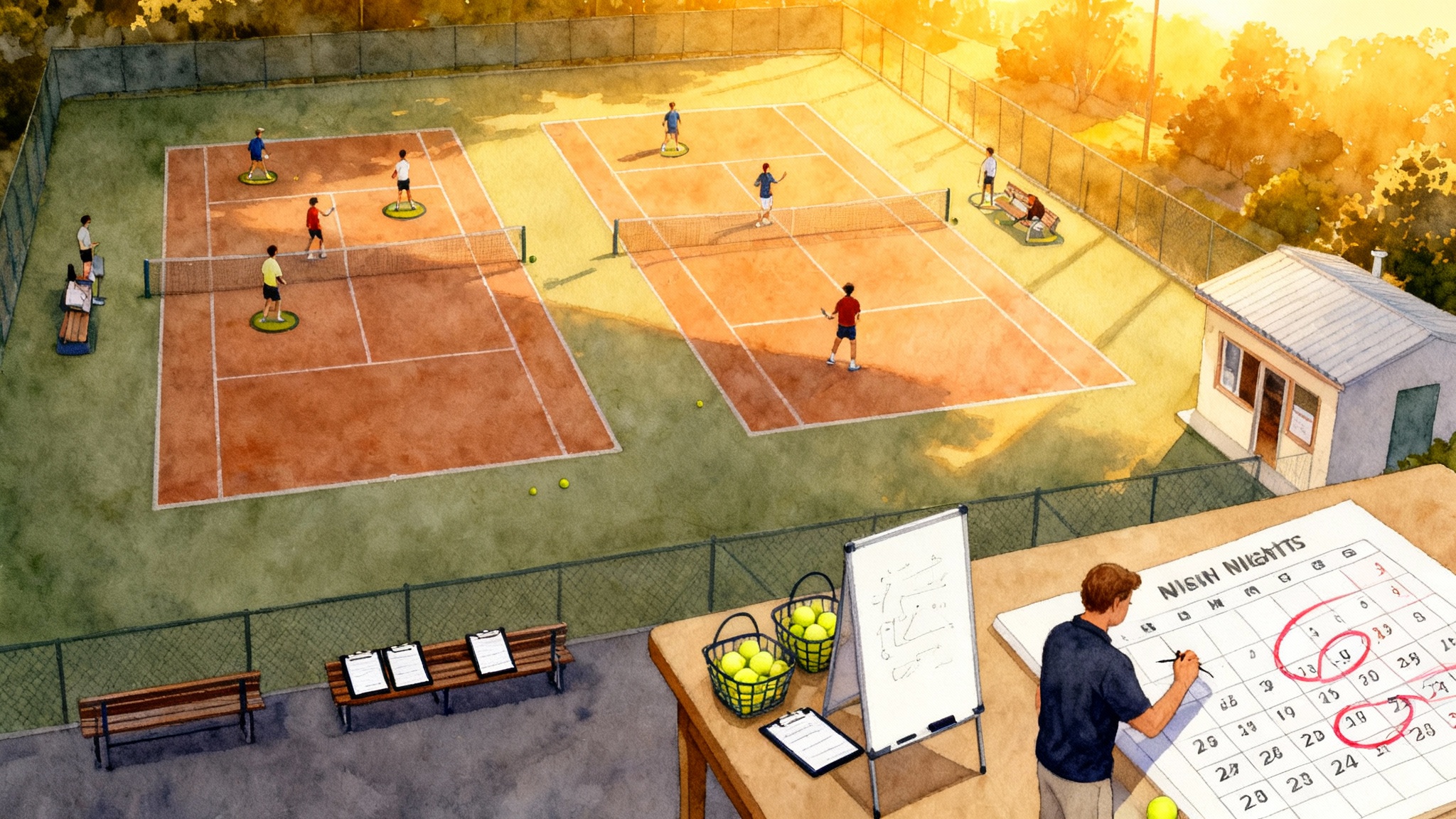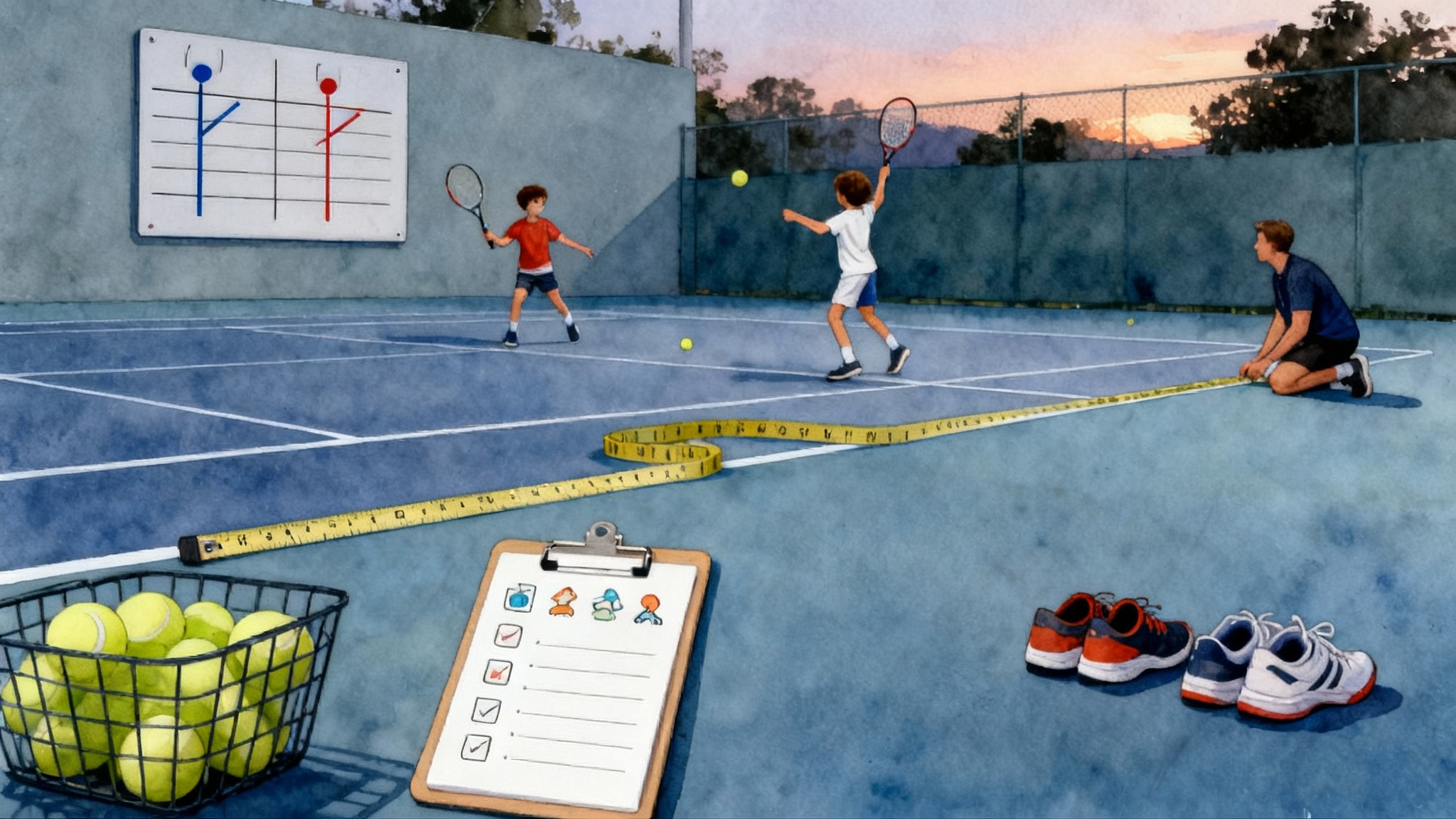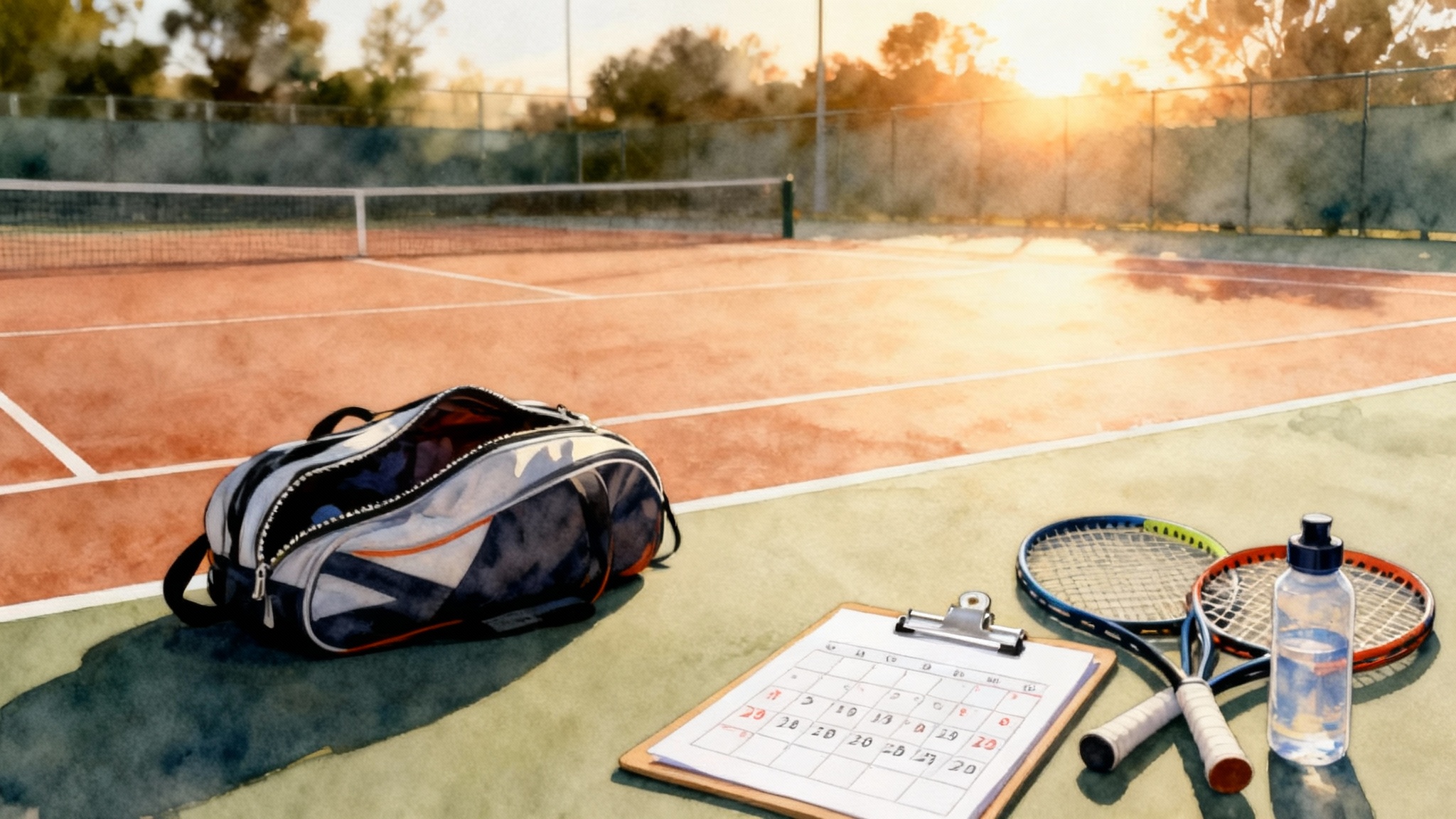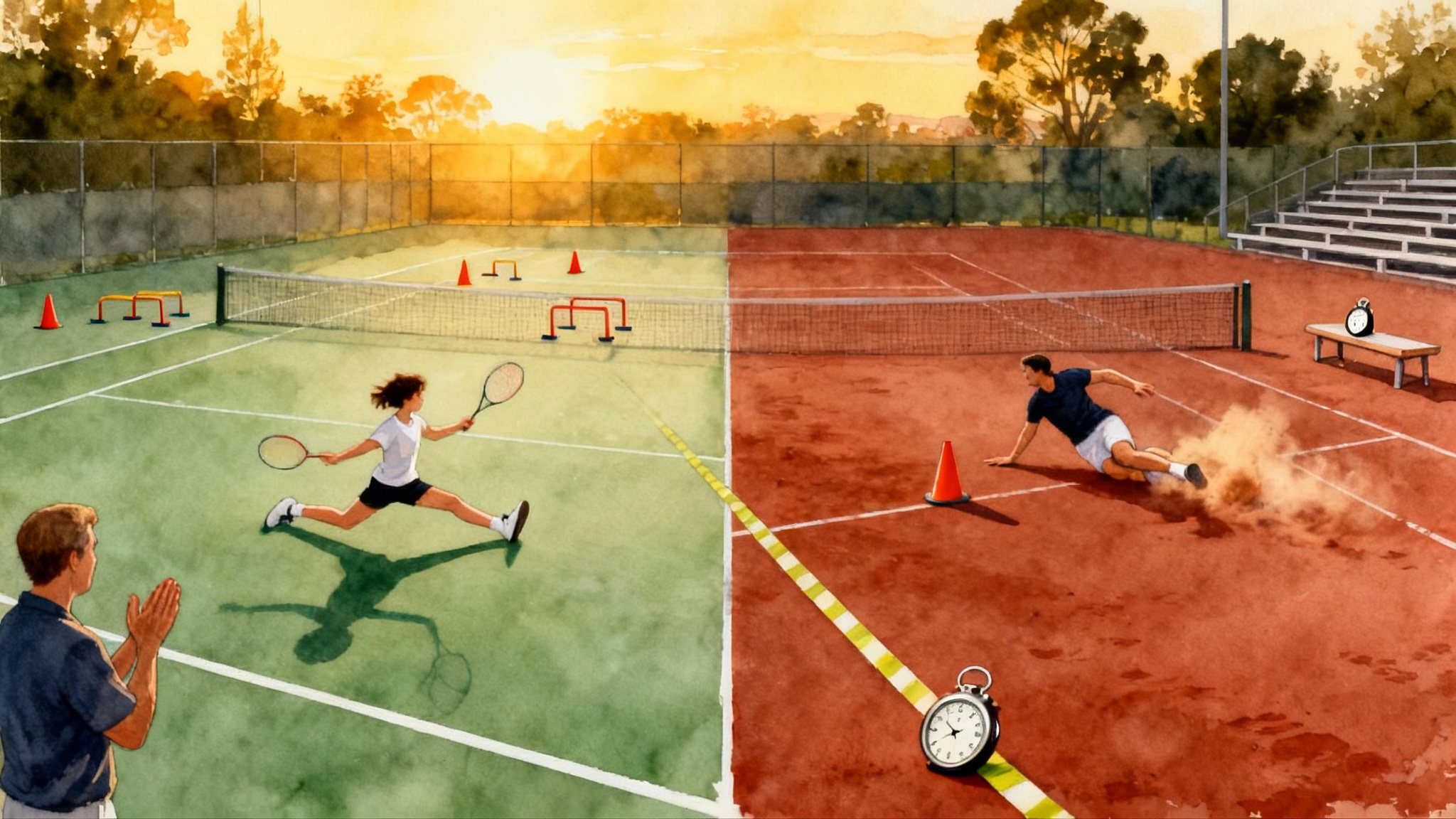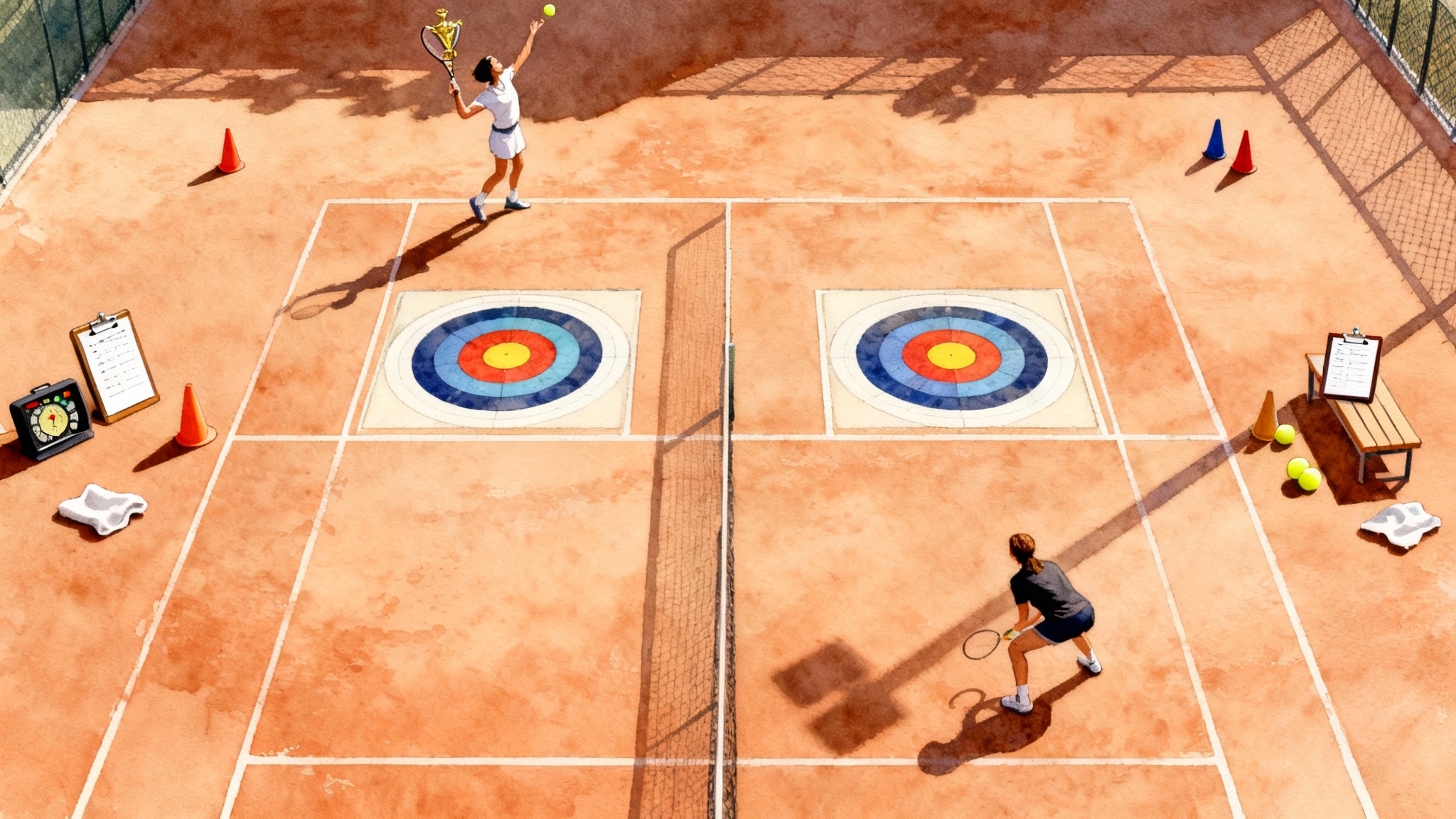College Tennis Recruiting 2025-2026: Grade-by-Grade Playbook
A step-by-step roadmap for U.S. and international families. Learn when to email coaches, target UTR and WTN ranges by division, build a 90-second video, plan visits, do scholarship math, and stay on track month by month.
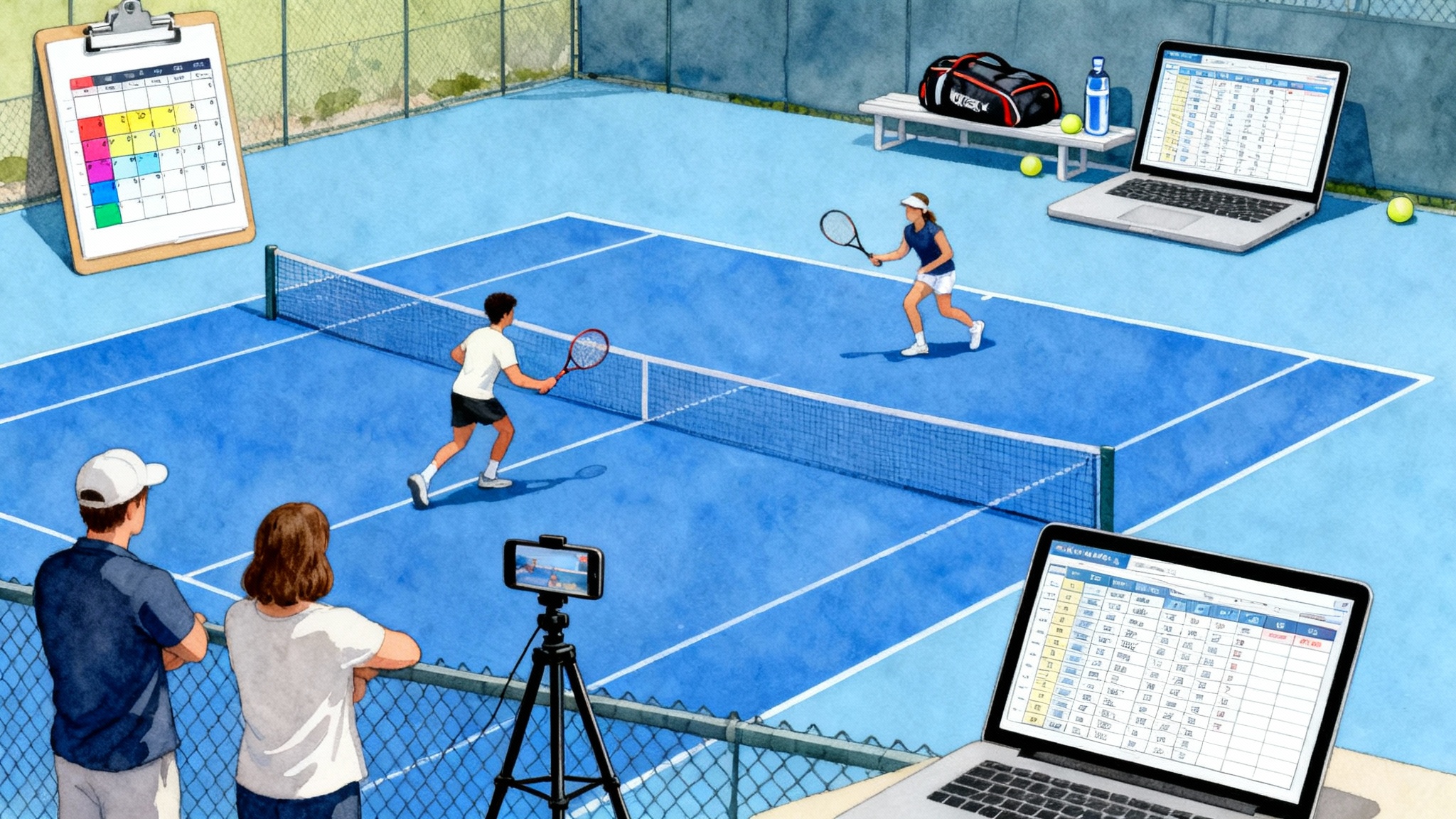
The 2025-2026 college tennis landscape at a glance
College tennis recruiting blends sport, school, and strategy. The rules are specific, the calendar is tight, and competition is global. This playbook gives parents and players a practical path you can follow today, whether you are just entering high school or racing to finalize a roster spot.
Think of the process as a relay. The athlete runs the first leg with grades, training, and match results. Parents run the second with organization, budgets, and travel. Coaches receive the baton when you communicate clearly and follow through. The teams that get recruiting right do not sprint once. They pass the baton cleanly again and again.
Scholarship and budget math you can actually use
Tennis is an equivalency sport in National Collegiate Athletic Association Divisions I and II. That means coaches can split scholarship money across multiple players. Typical limits many families hear about are 4.5 for men and 8 for women in Division I, and smaller but similar ranges in Division II. National Association of Intercollegiate Athletics and junior college programs also use equivalency models. Reality check: most packages stack athletic aid with academic merit, need-based aid, and international grants.
A simple formula to forecast cost of attendance:
- Cost of attendance per year: tuition + fees + housing + meal plan + books + travel + personal expenses
- Subtract: athletic scholarship dollars
- Subtract: academic merit and need-based aid
- Subtract: international or state grants where applicable
- Remaining number is your family out-of-pocket
Worked example:
- Cost of attendance: 52,000 dollars
- Athletic scholarship: 30 percent of cost of attendance = 15,600 dollars
- Academic merit: 10,000 dollars
- Need-based: 4,000 dollars
- Out-of-pocket: 52,000 − 15,600 − 10,000 − 4,000 = 22,400 dollars
Add a recruiting budget line so you do not get surprised:
- Tournaments and showcases: 1,500 to 4,000 dollars per year
- Video and gear: 100 to 400 dollars one time for tripod, phone cage, and balls
- Visits: 200 to 1,000 dollars per unofficial visit if you travel
This math clarifies tradeoffs. A slightly smaller scholarship at a stronger academic school may be a better lifetime investment. Write the numbers down and compare options side by side.
UTR and WTN targets by division
Coaches use match video first, then results, then rating trends. Your Universal Tennis Rating and ITF World Tennis Number are helpful filters, not final judgments. Treat these ranges as directional guides, not gates that open or close your future. For deeper tactics on using these numbers, see our internal guide on UTR and WTN match planning.
Men
- Division I top 25: UTR 13.2 to 14+, WTN roughly 1 to 7
- Division I mid-major: UTR 12.3 to 13.2, WTN roughly 6 to 12
- Division II competitive: UTR 11.3 to 12.5, WTN roughly 9 to 15
- Division III top: UTR 12 to 13, WTN roughly 7 to 13
- Division III broad range: UTR 9.5 to 12, WTN roughly 12 to 22
- NAIA and NJCAA: UTR 9 to 12.5, WTN roughly 12 to 24
Women
- Division I top 25: UTR 10.5 to 11.5+, WTN roughly 1 to 12
- Division I mid-major: UTR 9.5 to 10.8, WTN roughly 8 to 16
- Division II competitive: UTR 8.8 to 10.2, WTN roughly 12 to 20
- Division III top: UTR 9.8 to 10.8, WTN roughly 8 to 16
- Division III broad range: UTR 7.5 to 9.8, WTN roughly 16 to 26
- NAIA and NJCAA: UTR 7 to 9.8, WTN roughly 18 to 28
Two points matter more than any single number:
- Trend beats snapshot. A 0.2 rise over a summer tells coaches you handle volume and improve.
- Context matters. A 12 on a heavy travel schedule against strong draws is not equal to a 12 from local play only.
Grade-by-grade roadmap
This section starts early to cover every family. If you are starting late, jump to your grade and begin now.
Eighth grade
- Academics: set a daily homework routine and pick a foreign language that will carry through high school.
- Tennis: build athleticism through multi-sport play and learn grips, footwork, and patterns. One private lesson a week, three group sessions, one match day is a healthy base.
Ninth grade
- Transcript: aim for core classes that meet initial eligibility standards. A B plus average or better gives you scholarship stacking options later.
- Tournament plan: 12 events per year with two windows where you play back-to-back weekends. Results density matters.
- Start a simple player page: photo, height, dominant hand, grad year, email, phone, coach contact, links to ratings.
- Communication: keep a Google Sheet with 20 schools you like. No cold emails yet, but write a short paragraph about why each school appeals to you.
Tenth grade
- Spring: tighten the tournament schedule to your best surfaces and travel radius. Add doubles to show team value.
- Summer: play your heaviest schedule and track results by opponent rating, not just wins and losses.
- Pre-contact prep: by August build a clean video and one-page resume so you are ready when coaches can reply.
Eleventh grade
- June 15 after sophomore year is when many Division I and Division II coaches can start responding to emails and texts. Prepare a targeted outreach plan, not a blast.
- Fall: schedule two unofficial visits that match your academics and level. Meet players, attend practice, sit in a class, and price the trip.
- Winter: keep improving your trend line. Send one update per month with video plus two bullet results and upcoming events.
Twelfth grade
- Early fall: narrow to 6 to 10 serious options. Ask directly where you stand on their board and what timeline the staff is working on.
- Winter: finalize visits, compare packages, and line up admissions paperwork.
- Spring: keep the improvement curve. Coaches do fill late spots with seniors who improve.
Gap year or midyear start
- Train and compete with purpose. Coach communication continues, but your match volume should increase.
- Be ready for midyear opportunities when a player in a program leaves or a scholarship frees up.
A month-by-month outreach calendar for 2025-2026
Use this if you will be in high school during the 2025-2026 academic year. Adjust by one grade if you are early or late.
- November 2025: finalize your core school list. Write short, specific reasons for each. Gather transcripts and test plans.
- December 2025: film two full sets and cut a draft 90-second reel. Email updates to programs that match your level with a season summary and one clip.
- January 2026: play one event early in the month. Send a results note and your upcoming schedule. Ask if staff will be at specific tournaments.
- February 2026: schedule two unofficial visits within driving distance. Confirm class visit, practice observation, and a brief meeting with the coaching staff.
- March 2026: push fitness and doubles. Share a short highlight of serve plus one and return plus one patterns.
- April 2026: refine your list. For juniors, ask about summer camps or on-campus match days. For seniors, get written details of any offer.
- May 2026: final spring updates. Include grades, test scores if applicable, and two high-quality points that show problem solving.
- June 2026: heaviest competition window begins. Weekly score updates with clips. For rising juniors, prepare to engage if coaches reply.
- July 2026: track improvement metric by metric: first serve percentage, returns in play, conversion on break points.
- August 2026: evaluate your position with each program. Book early-fall visits. Confirm admissions requirements.
How to build a 90-second video coaches will watch
Your goal is to make it simple for a coach to say yes to the next step. That means clear angles, real points, and tight editing. For filming details at home, use our guide to video analysis step-by-step.
Structure
- 0-5 seconds: title card with name, grad year, height, dominant hand, backhand type, city, email, coach contact
- 5-20 seconds: live points from behind the baseline, crosscourt and line exchanges
- 20-45 seconds: serve plus one patterns to both sides, include at least two second serves
- 45-65 seconds: return games that show neutral, aggressive, and defensive returns
- 65-85 seconds: a pressure game at 30-30 or deuce, or a tiebreak segment to show decision making
- 85-90 seconds: contact slide and upcoming tournaments
Technical tips
- Camera angle: 3 to 4 feet behind the baseline, 5 to 7 feet high, centered
- Quality: 60 frames per second if your phone allows, lock exposure so the sky does not wash out
- Sound: no music, coaches want to hear ball contact and footwork
- Labeling: subtle scoreboard overlay is useful, but keep the frame clean and let the point breathe
- Authenticity: use full, uncut points more than isolated winners
Emailing coaches that reply
Coaches notice short emails that are specific and easy to act on. Two rules guide everything: personalize, and follow up with value.
Subject line examples
- 2026 lefty, UTR 10.2, summer schedule and 90-second video
- 2027 righty, WTN 14.8, interested in mechanical engineering
First email template
Hello Coach Lastname,
I am Firstname Lastname, a Class of Year recruit from City, State. I am interested in School because reason one that is specific and reason two tied to academics or team culture.
Current metrics: height, backhand type, UTR or WTN, recent results vs players in your range. Here is a 90-second clip and my next three tournaments.
If you have time for a brief call next week, I can share my fall and spring schedule and learn more about your roster needs.
Thank you for your time,
Firstname Lastname, phone, email, coach contact
Follow-up cadence
- If no reply after 10 to 14 days, send one short update with two bullet results and one new clip
- If the staff engages, match their tempo. Confirm calls in writing, send agendas, and deliver the next piece of information before they ask
- Stop after three attempts if the fit is off, then revisit only if your level changes or staff changes
Unofficial and official visit checklists
Bring questions and leave with clarity. Your goal is to decide if you would be happy here even if tennis ended tomorrow.
Before the visit
- Confirm date, time window, and who you will meet
- Pack tennis gear in case the staff invites you to hit
- Bring a notebook with your top five questions
What to ask the staff
- How do players develop from freshman to senior year here
- What are the top three traits of your best students and players
- How do you structure individual sessions and performance reviews
- What is the travel roster size and how do players earn spots
- What timeline are you recruiting on for my class
What to notice on campus
- Player body language at practice and in the locker room
- Academic support resources and how often athletes use them
- Conditioning setup, trainers, and access to treatment
- Housing, dining, and the walk from dorms to courts
After the visit
- Send a thank-you note that includes one specific highlight from the day
- Write your own pros and cons list within 24 hours while impressions are fresh
NIL and Transfer Portal realities
Name, image, and likeness is part of the landscape, but in tennis it is still modest compared to revenue sports. A few programs help top players land small brand deals or local opportunities. Most families should not plan their budget around NIL income.
The transfer portal has made rosters more fluid. Coaches can fill needs quickly, and older players can seek a better fit. The implication for recruits is clear: demonstrate reliability. Respond on time, show steady improvement, and be ready for a late opportunity. Keep your academics strong so you are admissible at more places, which makes you easier to take if a midyear spot opens.
How Tennis Innovators Academy keeps prospects on track
Families ask how a top academy organizes the recruiting grind. At Tennis Innovators Academy, the weekly rhythm balances match play, film, and coach communication so athletes never wonder what to do next.
Weekly rhythm
- Monday: technical tune-up on two priorities, for example serve toss height and early preparation on the backhand
- Tuesday: pattern day, serve plus one and return plus one in game-based drills
- Wednesday: fitness and recovery, mobility, and short on-court work with shadow swings on patterns
- Thursday: filmed practice sets, two sets race to six, tiebreak played at 6-6
- Friday: editing block, players cut a 90-second reel or select four full points that show problem solving
- Saturday or Sunday: verified match play against a mix of in-level and slightly higher-level opponents
Film standards
- Baseline angle, steady tripod, and a clean background
- One 90-second highlight per month and one full set sent upon request
- A shared folder per player labeled by date and opponent rating
Coach communication
- Monthly update package: 90-second clip, two bullet results, next three events, and a short self-assessment
- Outreach tracker: a shared sheet with school name, level, coach emails, last touch, next action, and notes
- Call prep: one-page brief before any coach call that lists academics, tennis metrics, and three questions for the staff
Parents support by guarding the calendar, not the conversation. Players own the emails and calls. That signal of independence plays well with college coaches who value accountability.
International families, simplified
If you live outside the United States, start early on evaluation and documents.
- Academic translation: secure certified translations and course descriptions for your core subjects
- Testing: confirm whether target schools accept local exams or require standardized tests
- Video and results: use more full-game footage and include opponent ratings and contexts
- Time zones: propose call windows that are morning for you and afternoon for the coach
Common mistakes and how to avoid them
- Sending mass emails without a specific reason you fit that program. Always reference a coach, a class, a major, or a match you watched.
- Overediting video into only winners. Coaches want to see decision making under pressure.
- Playing too little doubles. College tennis values doubles points and net skills.
- Ignoring academics until senior year. Merit money often makes the difference.
- Waiting for a perfect rating before emailing. Start the conversation with what you have and improve while the relationship grows.
Your next three actions
- Write your school list and add one reason for each program
- Film one full set this week, then cut a 90-second reel
- Send one thoughtful email with your schedule and two clips
Recruiting rewards families who do simple things well, over and over. Use the calendar, measure your progress, and keep the baton moving. If you stay consistent, a good fit will not just appear. You will build it, one clear action at a time.
